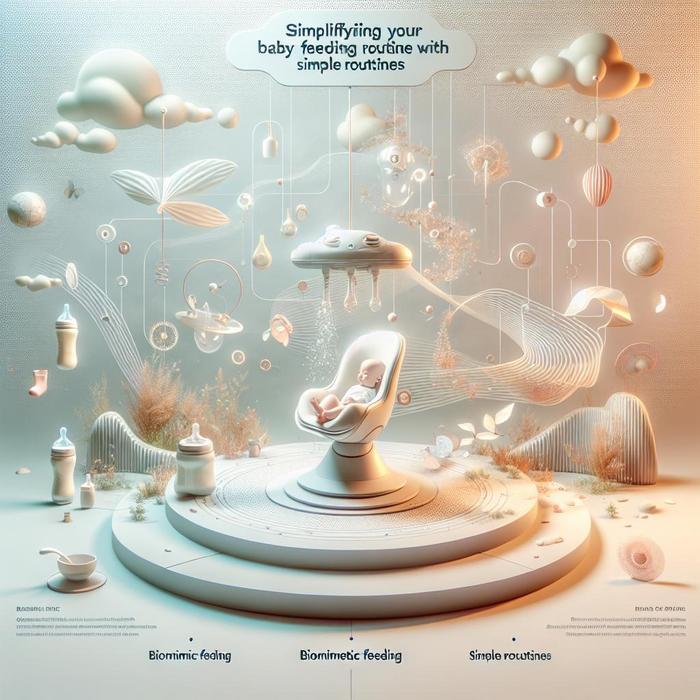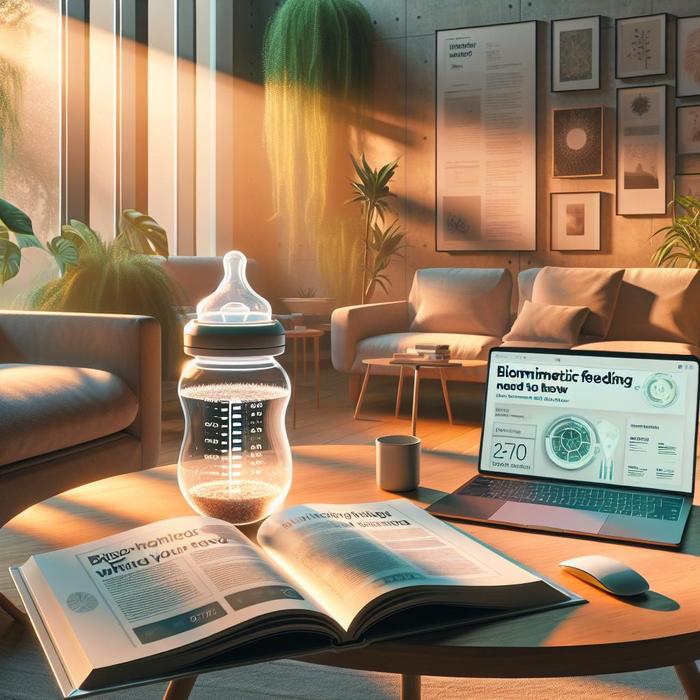Understanding Biomimetic Feeding
Hello, newbie parents! Today, we’re about to explore an exciting aspect of parenthood – Biomimetic feeding. If you’ve been looking for practical ways to transition your little one from breastfeeding to bottle-feeding, then biomimetic feeding is an avenue worth exploring.
What is Biomimetic Feeding?
Biomimetic feeding is an innovative feeding approach that mimics natural breastfeeding. It provides your baby with a bottle-feeding experience similar to how they feed on a mother’s breast. This method is designed to reduce bottle rejection and nipple confusion and is becoming increasingly popular among parents transitioning their babies to bottle-feeding.
Brands Supporting Biomimetic Feeding
Several baby feeding brands have embraced biomimetic feeding and designed products that mimic the natural feel and function of a mother’s breast. Some of these top brands include:
- Nanobébé – Known for preserving breast milk nutrients and providing ergonomic shapes similar to a mother’s breast.
- Comotomo – Famous for soft, skin-like silicone baby bottles that mimic breastfeeding.
- Tommee Tippee – Offers products like the Closer to Nature bottles designed to mimic the natural flex, stretch, and movement of a mother’s breast.
- Philips Avent – Their Natural baby bottle features wide, breast-shaped nipples to promote a natural latch similar to the breast.
These biomimetic feeding brands have made transitioning from breastfeeding to bottle-feeding a smoother process for both parents and babies.
How to Transition to Biomimetic Feeding
Transitioning to biomimetic feeding can be intimidating, but with proper guidance, it can become less daunting. Let’s explore some practical tips to ease the transition:
- Introduce the Bottle Gradually: Don’t rush the transition. Instead, gradually introduce the biomimetic bottle alongside breastfeeding. This approach gives your baby time to adapt to the new feeding method.
- Skin-to-Skin: Holding your baby close during bottle feeding sessions can help mimic the breastfeeding experience and make your baby more accepting of the new method.
- Involve Your Partner: Involve your partner during feeding times. This not only creates an opportunity for bonding but also helps the baby associate the bottle with comfort and care.
You can read more about transitioning seamlessly to biomimetic feeding here and the benefits of involving partners in feeding routines here.
Final Thoughts
Parenting is a journey of constant learning and discovery. Embracing biomimetic feeding is a step towards making this journey more rewarding and less challenging. Remember, it’s all about patience and perseverance during the transition. And no matter the journey, your love and care are the best nutrients your baby can have!
Let’s take it a step further! Feel free to share your questions or experiences below in the comment section. We are here to support each other on this beautiful journey of parenthood!
The Science behind Biomimetic Feeding
The concept of biomimetic feeding isn’t born out of chance, but it is a well-researched approach. Biomimetics is a field of study that imitates natural biological designs, structures, and strategies. In the context of feeding, it means we are trying to replicate the natural suckling mechanism that the baby uses at the breast.
According to a study published by Nature, the pattern of fluid flow during breastfeeding is highly complex and unique to each mother-baby pair. It also influences the baby’s ability to draw milk, contributing to their overall growth and development. This study emphasizes the need for bottle feeding methods that can closely mimic the dynamics of breastfeeding, the essence of biomimetic feeding.
Additionally, a research paper in the BMC- Pediatrics journal quoted the importance of replicating breastfeeding experiences, especially for preterm infants or babies with medical complications, unable to breastfeed directly. This makes biomimetic feeding an invaluable tool in situations where breastfeeding is not an option.
Benefits of Biomimetic Feeding
Biomimetic feeding not only smoothens the transition from breast to bottle-feeding but also brings a host of benefits for both the baby and the parents. Let’s explore some of these key benefits:
- Reduced Nipple Confusion: Biomimetic feeding minimizes the chance of nipple confusion. The shape and texture of the bottle and nipple are designed to be as close as possible to the mother’s breast.
- Eases Transition: Biomimetic feeding bottles have a natural feel and so, they are accepted readily by babies. This makes the transition between breastfeeding and bottle feeding easier.
- Enhanced Bonding: Biomimetic feeding also provides the perfect opportunity for other family members to bond with the baby. They can participate in the feeding sessions and enjoy the time spent with the baby.
Tips for Choosing The Right Biomimetic Bottle
Choosing the right biomimetic bottle is as crucial as the decision to switch over to biomimetic feeding itself. You’ll find several options in the market such as Emulait , Nanobébé, Comotomo, and others, but your baby’s comfort and approval would be the deciding factors. You should be seeking for:
- Shape and design of the bottle: The bottle’s shape and design should be such that the baby can easily hold it. An ergonomically designed bottle is not difficult for the baby to grasp and helps promote self-feeding.
- Material: The bottle’s material should be of high quality, easy to clean, and safe for the baby. Most parents prefer bottles made of silicone or glass as they are easier to sterilize and maintain.
- The flow rate of the nipple: The flow rate should match your baby’s sucking capability. Some babies prefer a faster flow, while others might prefer a slower one.
Remember, there may be a handful of trials and errors before you find the bottle that your baby adapts to the best.
Breaking Myths about Biomimetic Feeding
As a new parenting trend, biomimetic feeding sometimes gets surrounded by misinformation and myths. One such myth is that biomimetic feeding promotes laziness and dependence in a baby. But as per a recent study , babies who are fed using biomimetic feeding methods experience healthy development, comparable to those breastfed. Biomimetic feeding doesn’t manipulate a baby’s behavior; it simply eases the bottle-feeding process by making it feel more natural to them.
Another myth is that all biomimetic bottles work the same for every baby. But as we discussed earlier, every baby is unique, and the choice of the biomimetic bottle may vary from baby to baby. So it’s always about finding the best fit for your baby.






